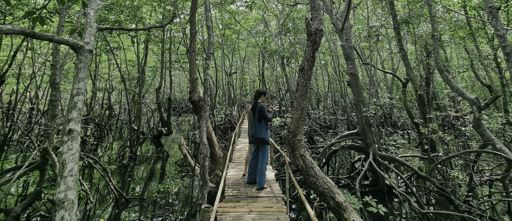Our vibrant nation of the Philippines is one of the most climate-vulnerable countries in the world. Subject to tropical cyclones, earthquakes and volcanic eruptions, it ranks number one globally on the World Risk Index. It is also one of the 17 mega-biodiverse countries, and it’s easy to see how nature and climate go hand in hand in this archipelagic nation. Working for the Zoological Society of London (ZSL), together we have seen how mangrove rehabilitation projects hold the power to inspire hope and bring security back to local communities following the typhoons that ravage our coastlines. Although we are accustomed to the threat of natural disasters, the frequency and intensity of tropical cyclones is leaving communities reeling, with thousands of local people without homes, work, or access to sanitation. Typhoon Man-Yi (known locally as Pepito), was the sixth super typhoon to make landfall here between October and November in 2024, and worryingly, last November the Japan Meteorological Agency reported that it was the first time since records began in 1951 that four storms coexisted in the Pacific basin. Mangrove forests provide key marine habitats for many creatures, while also protecting coastlines from storms. Image by Maxwell Ridgeway via Unsplash. Living in the shadow of these typhoons, we are proud that the Philippines was selected to host the U.N. Framework Convention on Climate Change (UNFCCC) Loss and Damage Fund board last year. Former Philippine secretary of environment and natural resources Maria Antonia Yulo-Loyzaga shared at the 4th meeting of the board…This article was originally published on Mongabay
From Conservation news via this RSS feed


